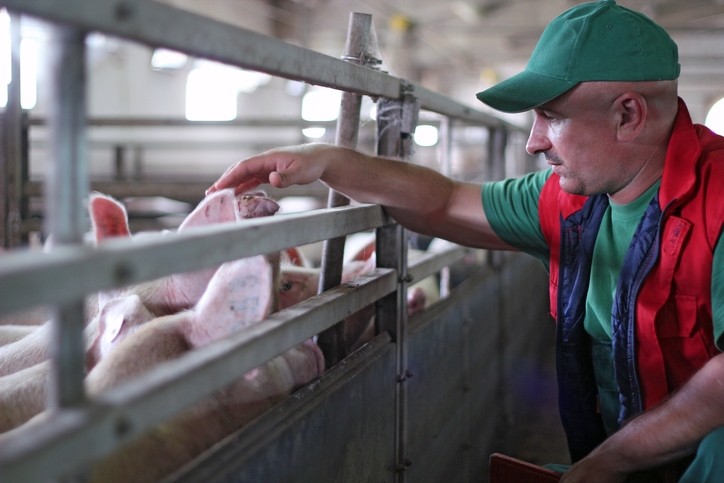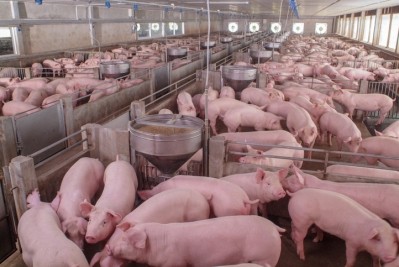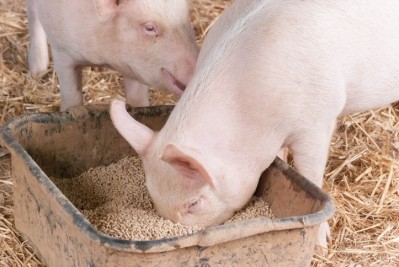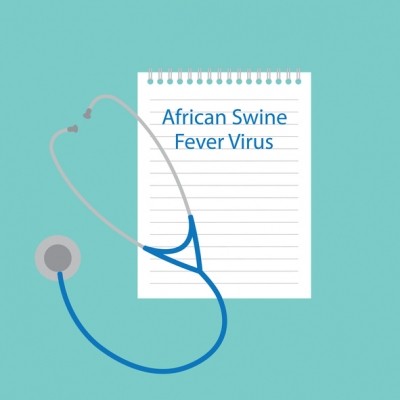Lessons from PEDV: preventing in-feed transit of ASF

A third case of African Swine Fever (ASF) was reported Sunday [August 19] in China, according to information from the Swine Health Information Center. The disease has been reported in the Haizhou District of China, and previously it was reported in the Henan province and Liaoning Province, in the northeastern part of the country.
The disease is one of several listed on the organization’s Swine Disease Matrix, where it carries the highest rating given regarding risk level in terms of production effect and effect on domestic or foreign markets.
The pathogen has high morbidity and mortality rates, said Paul Sundberg, executive director with the Swine Health Information Center. “For the most part, if a pig has ASF it is not going to survive,” he added.
“ASF coming into China where roughly half the pigs in the world are grown is a very significant event, and it’s a significant event to the Chinese and their reliance on pork and pork products, but it’s also a significant event to us in the US,” he told FeedNavigator. “For the US it changes the game, the level of the game for our risk [of] introduction into the US.”
There are several potential methods of transmission for the disease including through contaminated feed or feed ingredients, and the outbreak in China raises concerns that it could be brought to the US, he said.
PEDV, ASF and feed
The outbreak of the porcine epidemic diarrhea virus (PEDV) that struck the US in 2013 raised questions about the potential role for feed to be a pathway for diseases to spread. Researchers with the center have since examined several foreign animal diseases for their ability to survive in feed and feed ingredients.
ASF was one of the disease studied, according to center information. It was found to be able to retain its virulence through a simulated transit period from China to the US in soybean meal, soy oil cake, choline, cat and dog food and complete feeds.
“There are multiple transmission pathways and it is not all related to feed,” said Sundberg. The disease could be spread through imported food contaminated with the virus that was then fed to pigs or through contaminated materials.
“What we know about ASF is it’s a hearty virus it can last a long time in the environment,” he said. “It’s been known to be able to survive for months in the bones and bone marrow of wild boars that have died.”
The experience with the outbreak in the US of PEDV does not prove, but suggests, that the disease came into the country through feed or feed ingredients, he said. “We don’t know what one, we don’t know when, but the way the outbreak happened in the US it strongly supports the contention that feed imports were involved,” he added.
“It’s not proved, but there’s a lot of circumstantial evidence that could convict feed imports [for] the PED outbreak,” he said. “If you take that seriously, and use that as a precedent, we haven’t yet been able to adequately address the risk that is presented by feed imports, and that means that window for opportunity for ASF to be imported by feed products is still open, and that is a major concern.”
Prevention practices explored
Since the PEDV outbreak, the center has been working to help the industry better understand the risk of disease spread through feed, and that work has been given added urgency since ASF was found in China, said Sundberg.
“Shame on us if we don’t learn the lessons from that and do better in prevention and therefore response to that – the next one is going to come,” he said. “I hope it’s not ASF – but we have to learn the lesson of PEDV and apply it to ASF in an effort to prevent it from getting here.”
The measures the center and others in the swine industry have been developing including establishing a series of questions that producers can ask of feed suppliers to address handling and sourcing of feed products, work on process controls, efforts to apply the feed safety program developed by the FDA, use of blockchain to verify feed safety and testing potential feed-based mitigates, he said. However, there is additional work that needs to be done in several areas.
Biosecurity for producers also continues to be important, but that is always true, he said. The concern is that biosecurity measures can only be taken against known disease pathways.
“If there are things that you don’t know about then that window stays open, and that’s what we’re trying to do with feed,” said Sundberg.
Stopping the spread
Although emergency measures have been started, it may be a difficult disease to control, Sundberg said. “We know that the Chinese government is trying to contain [it] as quickly as they can,” he added.
“We know that the infections have been identified in various hog-dense areas,” he said. “We know the virus was present in the country for probably 4 months before it was found, and with the types of production that are in China with the movement of pigs and meat that can be infected, the expectation is that it will be very difficult thing to control, the outbreak, if possible at all.”
In the most recent account, in the Jiangsu Province, about 615 pigs have been reported as infected, the center reported. A contingency plan aimed at containing the disease has reportedly been activated and all movement of live pigs and animal products into or out of the area has been stopped.
Three provinces in the country have now reported cases of the disease and a fourth province also may be linked to the second event, the center said. The cases cover a large area of the country and some areas with high densities of swine.
In the US, there also is a procedure established for suspected outbreaks of a foreign animal disease – not just ASF, said Sundberg. “If a producer has a high mortality event in a barn or backyard, the first thing is call the veterinarian, that veterinarian should get to the farm to investigate what went on,” he added.
If the veterinarian suspects the presence of a foreign animal disease, next steps include temporarily stopping all movement on or off the farm and calling the state or federal animal health officials, he said. Those agencies have the ability to test and either confirm or deny the presence of a foreign animal disease pathogen.
“It all starts with the vigilance of the producer and the veterinarian,” said Sundberg. “If the veterinarian ignores it, or is mistaken, if the producer has an event and doesn’t tell anyone – it breaks down.”















